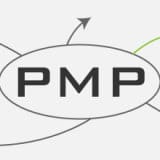PRINCE2 Foundation Certification Notes 7: Plans Theme

Important: The new PRINCE2® Foundation and Practitioner exams (PRINCE2® 2017) are available from 10 July 2017 (details of the changes here). Don’t worry, the changes are quite minor indeed as all the 7 principles, themes and processes remain the same. From now on until the end of 2017, candidates can take either the existing or updated English versions of the PRINCE2® exam. All PRINCE2® Foundation and Practitioner exams will be based on PRINCE2® 2017 from 1 January 2018. You can still seize the time to get certified based on the current version! Once you get PRINCE2® certified, your certification is still valid under PRINCE2® 2017 and onwards!
Introduction: In PRINCE2®, there are 7 Themes describing important aspects of project management that are vital to the success of the project. The Plans Theme is the fourth PRINCE2® Theme which defines the means (who, when, where, how &how much) of delivering the products in the project plan. Like the Quality Theme, the Plans Theme is primarily based on the PRINCE2® Principle of “Focus on Products”. The PRINCE2® Foundation Study Notes for the Plans Theme below details what are needed for the PRINCE2® Foundation Exam.
Article Highlights
PRINCE2® Theme: Plans
- The Plans Theme is to provide a framework to design, develop and maintain the Project Plans (including the Project Plan, Stage Plan, Team Plan and Exception Plan).
- Planning is the process of creating and maintaining the plan and associated documents.
- The Plans are used to act as a baseline for controlling and comparing of the performance of the project on time, cost, quality, scope, risk and benefits.
- Good planning will avoid scrope creep and out-of-scope works to
3 Levels of Plans
- Project Plan
- a high-level plan for the whole project used by the Project Board for providing direction
- shows the major products, their delivery schedules and costs
- to be used as a baseline for project control
- created during the “Initiating a Project” process and continually updated by the Project Manager during the project
- Stage Plan
- a more detailed plan for each management stage for day-to-day management
- Initiation Stage Plan — created by the Project Manager during “Starting up a Project” process
- (Delivery) Stage Plans — created by the Project Manager during “Managing a Stage Boundary” process
- a more detailed plan for each management stage for day-to-day management
- Team Plans
- a detailed plan focusing on planning the assigned work of the Work Packages for product delivery
- created and used by the Team Manager in the “Managing Product Delivery” process; need to be approved by Project Manager
- Team Plans are optional
Exception Plan(s)
- Should the project performances is beyond the tolerance, the original plan is not working and the Project Board may request the Project Manager to creat an Execption Plan / Stage Exception Plans (updates to the current plan) to help recovering the project from the deviations (in cost, time, scope, etc.)
PRINCE2® Seven Planning Steps
- Design the Plan
- to agree on style, format, design, estimation tools and methods of plan
- may follow the organization/program requirements
- Define and Analyze Products (Specialist and Management Products)
- Product-Based Planning — an iterative planning process to gain agreement on the product scope
- Writing the Project Product Description — with high level info, quality requirements and acceptance criteria (in “Starting Up a Project” process), info to be supplied by Senior User(s)
- Creating the Product Breakdown Structure (PBS) — a hierarchical overview of the products (in “Initiation Stage” / “Managing a Stage Boundary” process), no special recommendation on the format from PRINCE2®
- Writing the Product Description — for each individual products (optional for small projects)
- Creating the Product Flow Diagram — shows the sequence and interdependency of events, need input from those who actually create, use and maintain the products
- Product-Based Planning — an iterative planning process to gain agreement on the product scope
- Identify Activities and Dependencies
- the Work Breakdown Structure is created to define the activities
- dependencies can be internal or external
- Prepare Estimates
- estimating the time and resources (based on the estimating methods defined in Step 1), usually in a range
- Prepare the Schedule
- define activity sequence by considering the resource availability
- include control points and milestones
- calculate total resource requirements and costs
- Document the Plan
- expand on the Plan by supplementing the details on: plan description, plan prerequisites, external dependencies, planning assumptions, lessons incorporated, monitoring and control, budget information, tolerances and risk
- Analyze the Risks
- risks identified in Steps 2 – 6 would be analyzed and entered in the Risk Register
Plans Theme: Roles and Responsibilities
- Corporate or Programme Management: set the Project Tolerances (in the Project Mandate) and approves Exception Plan (if any)
- Executive: sets the Stage Tolerances and approves the Project Plan and stage-level Exceptions Plans
- Senior User(s): provides resources for Product-Based Planning, e.g. product requirements, quality requirements
- Senior Supplier(s): provides resources for Product-Based Planning, e.g. breaking down work, estimation
- Project Manager: prepare the Product Descriptions, Project Plan, Stage Plan and Exception Plan / Stage Exception Plans
- Project Assurance: advises on planning and assures the implementation of Quality Management Strategies
- Team Manager: prepare Team Plan
- Project Support: assists the creation and update of Plans
(The PRINCE2® Quality Theme is similar to the Project Cost Management, Project Scope Management and Project Time Management as described in the PMBOK® Guide for PMP Certification Exam dealing with the cost, scope, time, risk and quality planning of the product/project as in the PMP Exam.)
Wish you PRINCE2® Foundation Exam success!




 Hi, my name is Edward Chung, PMP, PMI-ACP®, ITIL® Foundation. Like most of us, I am a working professional pursuing career advancements through Certifications. As I am having a full-time job and a family with 3 kids, I need to pursue professional certifications in the most effective way (i.e. with the least amount of time). I share my exam tips here in the hope of helping fellow Certification aspirants!
Hi, my name is Edward Chung, PMP, PMI-ACP®, ITIL® Foundation. Like most of us, I am a working professional pursuing career advancements through Certifications. As I am having a full-time job and a family with 3 kids, I need to pursue professional certifications in the most effective way (i.e. with the least amount of time). I share my exam tips here in the hope of helping fellow Certification aspirants!





